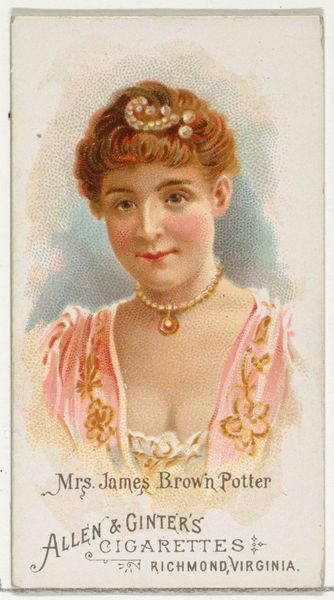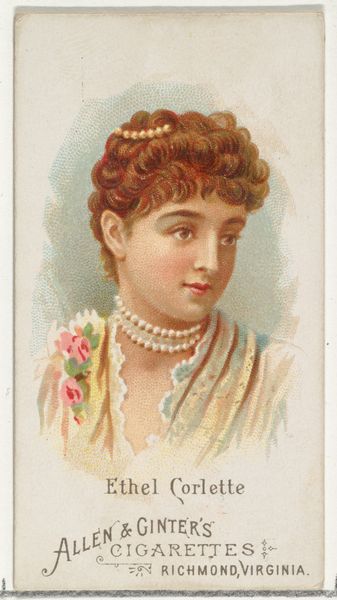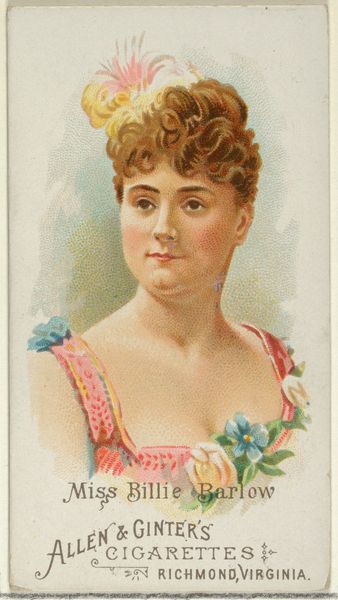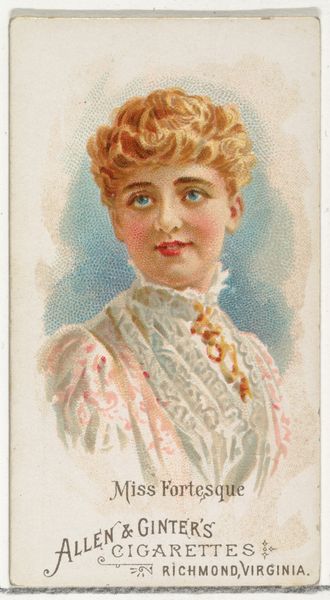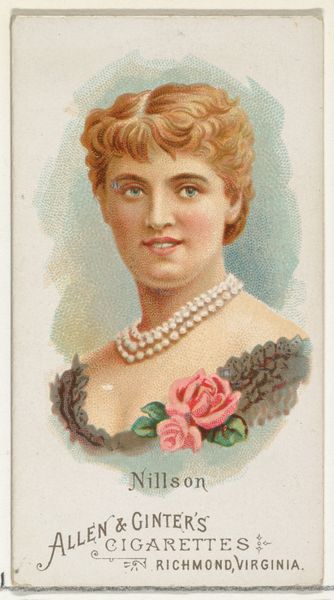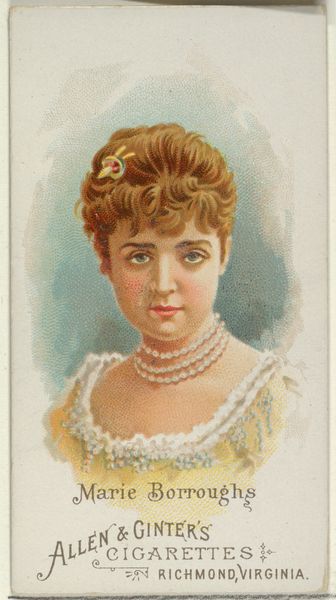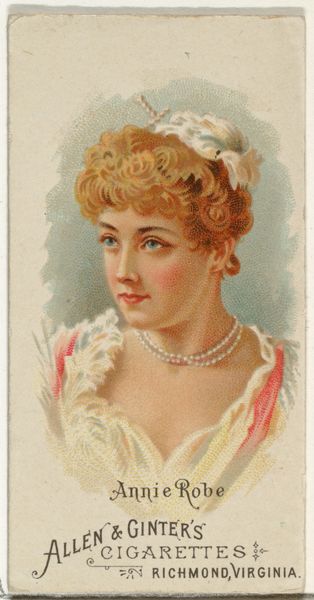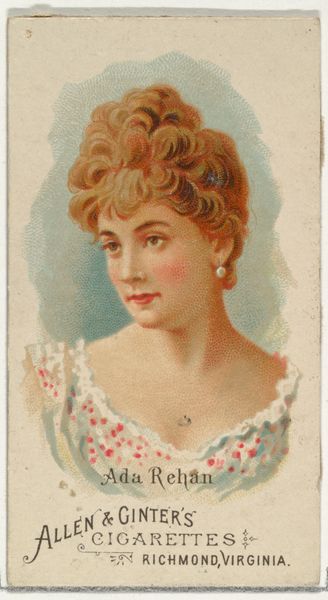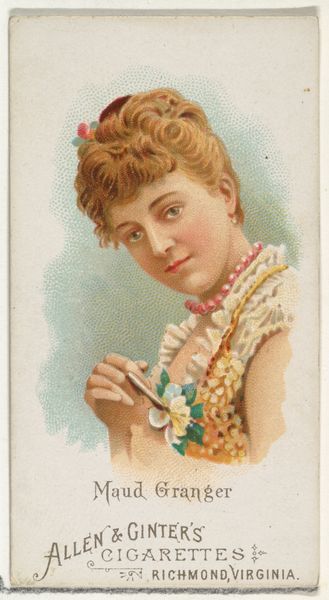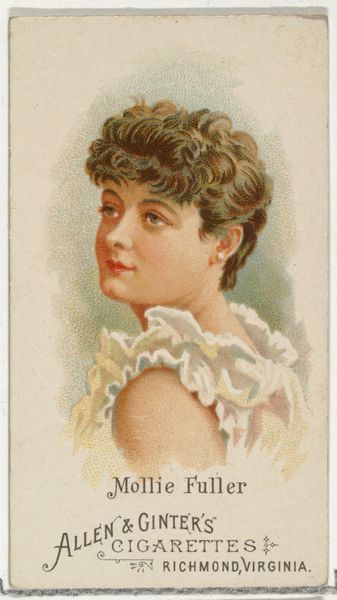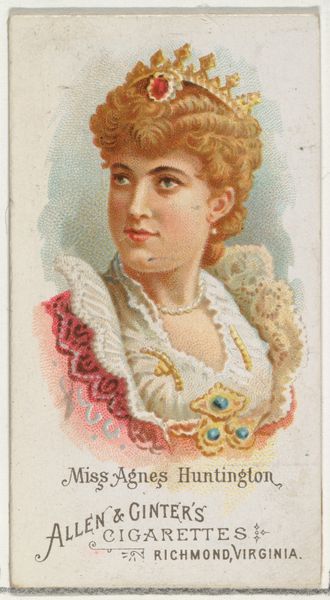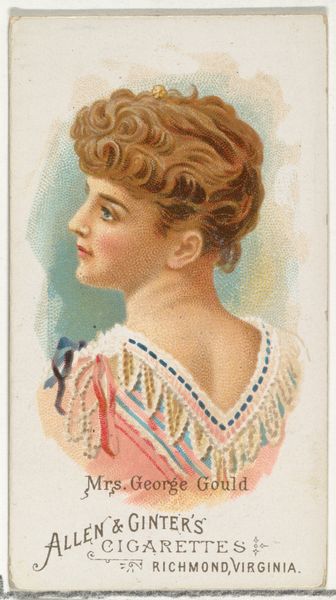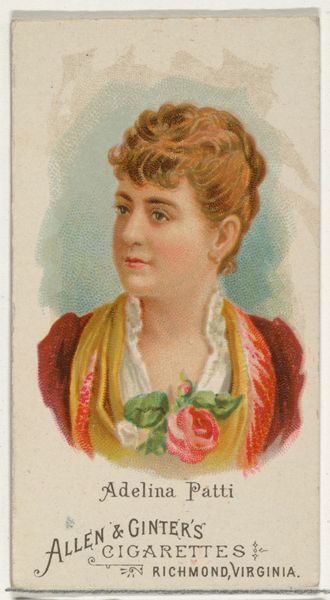
Louise Montague, The $10,000 Beauty, from World's Beauties, Series 1 (N26) for Allen & Ginter Cigarettes 1888
0:00
0:00
#
portrait
# print
#
caricature
#
coloured pencil
Dimensions: Sheet: 2 3/4 x 1 1/2 in. (7 x 3.8 cm)
Copyright: Public Domain
Curator: This lovely piece is titled "Louise Montague, The $10,000 Beauty" from Allen & Ginter Cigarettes’ World’s Beauties series, dating back to 1888. It’s a colored pencil print, found here at The Met. What strikes you about it? Editor: Honestly, at first glance, there’s something unsettling about how stylized she is. The slightly glazed-over eyes, the perfectly positioned gaze…it’s very performative femininity. Curator: Absolutely. These cards were produced as advertisements, little treasures tucked into cigarette packs. Allen & Ginter sought to appeal to consumers by associating their product with desirable images. Think about how ideas of beauty are commodified. Editor: Exactly. And $10,000 Beauty! That's quite a label. It reduces her to a monetary value, highlighting the societal objectification of women. Who decided she was worth that much? And to whom? Curator: Right. In the context of the late 19th century, images like these were incredibly powerful in shaping perceptions. The Japonisme influence is clear, drawing on the aesthetic of Ukiyo-e prints. Notice the flat planes of color and the focus on idealized beauty? Editor: I see it, yes. The exoticizing gaze of Japonisme is undeniable. It takes traditional Japanese art and repurposes it, often stripping it of its original meaning. And how does Louise, this “$10,000 Beauty,” fit into that framework? Is she, too, being exoticized for the consumption of a specific male gaze? Curator: That's a crucial question to ask. It really highlights the complex interplay of art, commerce, and the construction of identity. This card is small, seemingly innocuous, but loaded with cultural messaging. Editor: It’s a fascinating capsule of its time. Makes you think about how advertising continues to shape and reflect societal values. This one card encapsulates a great deal about 19th-century attitudes towards women and global cultures. Curator: A perfect example of how even the smallest artifacts can tell such complex and telling stories about beauty and the power of representation. Editor: Definitely. Seeing through the surface is often where the richest discoveries lie.
Comments
No comments
Be the first to comment and join the conversation on the ultimate creative platform.
